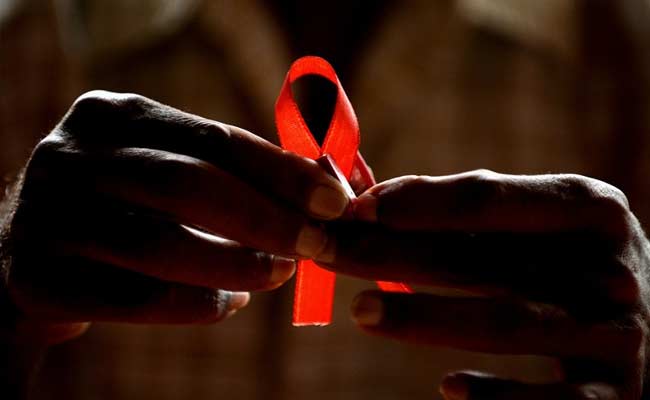World AIDS Day 2018: Here's all you need to know about HIV.

World AIDS Day 2017: All you need to know about HIV/AIDS
HIGHLIGHTS
- HIV was first clinically observed in the United States in 1981
- 1 million people died due to HIV related illness in 2016 alone
- The disease in itself may manifest as a mild illness in the early phase
HIV or the Human Immunodeficiency Virus is a virus which when it infects an individual can lead to progressive shutdown of the immune system and, eventually, the Acquired Immunodeficiency Syndrome (AIDS).
HIV was first clinically observed in the United States in 1981 and the first case in India was reported in 1986. This led to the formation of the National AIDS Control Program (NACP) in 1992 and thereby National AIDS Control Organisation (NACO) was constituted for its implementation. Ever since, the entire world has been trying to fight with the HIV epidemic in order to control it.
At the end of 2016, it was estimated that around 36.7 million people were living with HIV infection worldwide and approximately 1 million people died due to HIV-related illness in 2016 alone. In India, the estimated population of people living with HIV is around 2.1 million. Since 2010, new HIV infections have decreased by 46% and AIDS-related deaths by 22%. However, in 2016 alone, there were around 80,000 new cases of HIV infections and 62,000 deaths. Among the states and UTs, Manipur (1.15%), Mizoram (0.8%) and Nagaland (0.78%) have the highest prevalence of HIV infection.
The adult HIV prevalence at the national level, however, continues to plummet from 0.38% in 2001-03 to the current 0.26%. To achieve this decline in HIV prevalence and incidence, the Govt. of India, through the NACP and the NACO has been working and funding projects tirelessly. There are around 528 ART centres in India (as per the NACO website) with around 976 Link ART Centres. The ART centres provide a one stop solution for counselling, testing, diagnosis, screening of opportunistic infections and free treatment. Through NGOs and self-help groups the ART centres provide social and economic rehabilitation of the affected individuals.
The key population most affected by HIV are: sex workers, men who have sex with men, people who inject drugs and transgender people. Patients requiring repeated blood transfusion are also at high risk and so are the health care workers who take care of such patients.
Understanding how the disease does not spread is perhaps more important than understanding how it does. It is because of this lack of understanding that people affected with HIV are discriminated against, everywhere - be it at their workplace, the hospitals, homes or religious places. The disease can be transmitted by unprotected sex (vaginal or anal), contaminated blood transfusions, needles, and from mother to child during pregnancy, delivery, or breastfeeding. However, it is not spread by kissing, hugging, sharing food, insects, sneezing or sweat or tears or by sharing clothes and toilet.
The disease in itself may manifest as a mild illness in the early phase, very much like the common cold, - mild fever, sore throat and other nonspecific symptoms, and then become dormant for months to years before manifesting as a severe diseased state. This makes diagnosis and screening of HIV very difficult in the early stage, unless people in the high risk groups themselves come forward for screening during the asymptomatic period when they suspect an exposure to the virus. The HIV lies dormant in the body, killing the body's immune system slowly, over years and sometimes decades, which makes the affected person vulnerable to many secondary infections, which the body would have usually warded off.
There is no doubt that the disease can be debilitating and can eventually kill. In fact, back then, when HIV was a lesser known entity with almost no treatment modalities it meant a death sentence. Fortunately, with the advent of highly active antiretroviral drugs (HAART), it has been possible to dissociate death from HIV in most cases. Even though there is no complete cure, it is manageable. The disease, today, is like any other chronic illness (hypertension or diabetes) which requires long term treatment. Earlier, the number of pills and side effects were too many and that was a major deterrent in the management of HIV, but newer treatment regimens comprising of one or two pills with minimal side effects have been the cornerstones of success. Adherence to therapy is the key to the management of the infection, failing which, the treatment will fail with development of resistant strains. In a patient with HIV who is on treatment and regular follow up, the life expectancy is almost equal to that of an uninfected person.
All said and done, the battle is far from over. Though it has been possible to control the infection and halt the progress of the disease, we are still losing because of the stigma associated with it. To quote Michel Sidibé, Executive Director, UNAIDS, "Whenever AIDS has won, stigma, shame, distrust, discrimination and apathy was on its side. Every time AIDS has been defeated, it has been because of trust, openness, dialogue between individuals and communities, family support, human solidarity, and the human perseverance to find new paths and solutions."
Revealing one's HIV status usually results in social boycott, denial of services and healthcare, discrimination at workplace, rejection by family members and even violence. It is also associated with character assassination because of the perceived lifestyles and behaviours of the affected individuals. This has, perhaps, been the most important reason prohibiting affected individuals from seeking care and treatment, causing social and economic marginalisation of the affected individuals with poor social and mental well being, poverty, sickness and augmented high risk behaviour. The roots of this lie in the myths and misinformation associated with the disease. We need to understand that people with HIV are no different and do not possess a threat to others in normal day to day life. Infected individuals are no less human than non-infected individuals, and to discriminate on the grounds of their HIV status is not only morally wrong, it is also prohibited by law. Social support to the affected individuals and their families is of immense importance to cope with the disease and defeat it. The battle can only be won through a more conducive and receptive society, free of all stigmas, where more and more people can come forward and seek treatment.
Though we have come a long way in the management of HIV, there are miles to go before we reach the optimum. Apart from the major challenge of stigma associated with the disease, there are other challenges like ensuring adherence and follow up, delivery of more cost-effective and integrated HIV services, prevention of transmission from mother to child, better infrastructure and continuous funding, addressing the problem of malnutrition, depression and unemployment among the affected individuals. Probably, these and much more will be actively addressed in the NACP-V (2017-2024).
The word, "Positive" should not be a state of health, but our attitude towards the affected.
*The data has been taken from the websites of WHO, UNAIDS and NACO.
(Dr Neeraj Nischal is an Assistant Professor at the Department of Medicine, AIIMS, New Delhi)
DoctorNDTV is the one stop site for all your health needs providing the most credible health information, health news and tips with expert advice on healthy living, diet plans, informative videos etc. You can get the most relevant and accurate info you need about health problems like diabetes, cancer, pregnancy, HIV and AIDS, weight loss and many other lifestyle diseases. We have a panel of over 350 experts who help us develop content by giving their valuable inputs and bringing to us the latest in the world of healthcare.














